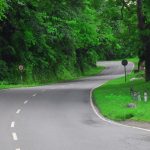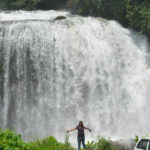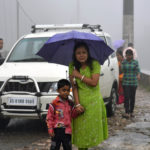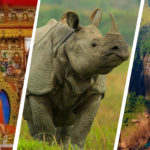Shillong Tourist Spot || Shillong Tourist Places || Shillong Places to visit || Places to visit in Shillong
Places to visit in Shillong
Here are some of the best Shillong places to visit. You must visit shillong tourist places to witness the ethereal beauty of the hill station.
Shillong Tourist Spot are
• Umiam Lake :- Umiam Lake is a reservoir located in the hills 15 km to the North of Shillong in the state of Meghalaya, India. It was created by damming the Umiam river in the early 1960s. The principal catchment area of the lake and dam is spread over 220 square km. The lake was formed as part of building a Dam. The dam started construction in 1965. The dam has the distinction of being the first Hydel power project in the North-east region of India.
• Shillong Catholic Cathedral:-Built on the same spot, which witnessed the first church in Shillong, this historical monument of peace and divinity is almost 50 years old. The beautiful church is constructed in the Gothic architectural style and is a spectacular sight in the midst of sprawling green lawns. This church is also known as the Cathedral of Mary Help of Christians. The most unique feature of this church is the fact that it is built on sand and not on rock. As the region is prone to earthquakes, this ensures that any earthquake-related shock is absorbed by the sand, thereby securing the church from any major damage. Situated on top of an emerald-coloured hill, the tall arches of the church and its stained glass installations will mesmerise any tourist visiting Shillong. Near the altar of this church is the grave of the First Archbishop of the city. Apart from all these, the church also has several pieces of artwork depicting various scenes and chapters from holy scriptures.
• Shillong Peak:– A picnic spot, 10 km from the city, 1965 m above sea level, offers a panoramic view of the scenic countryside and is the highest point in the state. Obeisance is paid to U Shulong at the sanctum sanctorum at the peak’s summit every springtime, by the religious priest of Mylliem State.
• Don Bosco Centre for Indigenous Cultures:- The Don Bosco Museum is part of DBCIC (Don Bosco Centre for Indigenous Cultures). DBCIC comprises research on cultures, publications, training, animation programmes and the museum, which is a place of knowledge-sharing on the cultures of the northeast in particular, and of culture in general. DBCIC with its Don Bosco Museum is situated at Mawlai, Shillong.
• Elephant Falls:– 12 km on the outskirts of the city, the mountain stream descends through two successive falls set in dells of fern covered rocks.
• Lady Hydari Park:- The park stretches over a kilometre and has an adjacent mini zoo. Forest Museum in Lady Hydari Park
• Wards Lake:- Known locally as Nan-Polok. Its an artificial lake with garden and boating facilities.
• Shillong Golf Course:- Shillong has one of the largest golf courses (the world’s wettest) in Asia: Gleneagles of the East. It enjoys the rare distinction of being one of the few natural golf courses in Asia. Not only is the Shillong Golf Course scenic and enjoyable, it is also challenging. A group of British civil service officers introduced golf to Shillong in 1898 by constructing a nine-hole course. The present 18-hole course was inaugurated in 1924. The course is set in a valley covered with pine and rhododendron trees. The tight fairways, carpeted with a local grass which hardens the soil, are difficult to negotiate. The number of out-of-bounds streams that criss-cross every fairway makes it all the more trying. Obstructions come in the form of bunkers, trees and rain. The longest hole is the 6th, which is a gruelling 594 yards. Shillong Golf Course is considered to be the “Glen Eagle of the East” at the United States Golf Association Museum. It was set in a valley at an altitude of 5200 ft in 1898 as a nine-hole course and later converted into an 18-hole course in 1924 by Captain Jackson and C. K. Rhodes.Eco Park :- A large “Eco Park” established by the Meghalaya government in the plateau, which hosts several hybrid and indigenous orchids in the Green House donated by Shillong Agri-Horticultural Society. Also the Eco Park offers breathtaking view of distant Sylhet Plains of neighbouring Bangladesh.
• Entomological Museum (Butterfly Museum):- A privately owned museum of M/s Wankhar, Riatsamthiah, Shillong about 2 km from Police Bazar is the only known museum in India devoted to moths and butterflies. The Don Bosco Museum of Indigenous Cultures at DBCIC (Don Bosco Centre for Indigenous Cultures) is Asia’s largest Museum of Indigenous Cultures of its kind. In it the visitor can have an overview of the whole of North East India. Rising into Shillong’s skyline the Museum is a seven storey building with 17 well laid out Galleries of international standard containing artefacts, paintings, fibreglass figures – all a feast to the eyes and a source of knowledge. The topmost Gallery is where the visitors can relax and enjoy some of the rare dances of the North East. The Museum is indeed a surprise to visitors both from India and from abroad. Its best publicity are the visitors themselves who come to see it.
• Duwan Sing Syiem Bridge:- Duwan Sing Syiem Bridge , which is almost like a bridge between two worlds. Before us is the deep Mawkdok Valley , bounded by two rows of never-ending hills that seem to stretch on forever. The view is breathtaking and my daughter thinks it’s an ideal shooting location for those “James Bond type movies”. Even as we stand there sipping tea from one of the many stalls here, the mist comes rolling in, and visibility is reduced to a few metres
• Mawkdok Dympep Valley View :- A few kms from Umtyngar, as one takes the right turn from the road junction, one comes across a beautiful bridge known to the locals as the Duwan Singh Syiem Bridge, that is the entrance to the Sohra tourist circuit. From here the landscape abruptly changes into picturesque deep gorges. The Forest Department has constructed a view-point where visitors can stop a while and enjoy the spectacular natural beauty.
• Mawsmai cave:- Of all the caves in Meghalaya, including the longest cave system of India are situated in the Jaintia Hills. Mawsmai cave is by far the most accessible cave for many travelers as it is one of the few caves one can explore without a guide. It is just a small introduction to the world of caves and underground adventure, which in itself is another big world that requires a specialty.
• Noh-Sngithiang Falls:- Noh-Sngithiang Falls also known as Mawsmai falls, is 1 km south of Mawsmai village and derives its name due to the fact that the waterfalls are situated in a south westerly position and get illuminated by the sun from dawn to sunset. The vibrant colours of the setting sun on the waterfalls make it beautiful to behold.
• Thangkharang Park :- Thangkharang Park is a beautiful park and a more popular viewpoint. There are various species of plants and trees that can be seen in the park and in the greenhouse within the area of the park. This particular park has also been designed keeping in mind the needs of children who care lesser about nature and more about having the time of their lives on a swing or a see-saw or even a slide. There are stunted trees and benches around the park to provide resting spots to visitors. There is also a beautiful little fountain built inside the premises of the park. View of Kynrem falls from Thangkarang Park
• Nohkalikai Falls:- Nohkalikai Falls is one of the most beautiful and photogenic falls I had ever seen. At 335 meters it is the highest plunge waterfall in India and the 4th highest in the World. Just a 10 minutes drive from main town of Cherapunji, the fall is located at another blunt end of the plateau. The gorge here is green and trees grow like a mini rainforest. From the edge of the cliff the waterfall looked like a white rope in a sea of green forests. The water plunges 335 meters downwards and has carved out a waterhole. Strangely, the waterhole is as blue as the sky in winter and green in summer. In winter the water recedes to just a minimal amount, but in summer the falls are lavish. The name Nohkalikai is derived from a tragic Khasi legend. Almost every beautiful or interesting place in North-East seems to have originated from a sad story. This is no different. A woman named Ka Likai remarried a man but her second husband became jealous for treating her daughter with so much love; perhaps more than him. One day while she was away at work her husband cooked the girl and served it to her. After she had eaten it, she was to go looking for her baby girl. Much to her dismay she found her daughter’s finger in a betel nut basket. Greatly saddened by this, she leaped off the fall and the fall came to be known as ‘Nohkalikai’ which is literally translated as, ‘jump of Ka Likai.’
• Khoh Ramhah :- Khoh Ramhah or the Pillar Rock also known as Motrop. A massive rock formation in the shape of a giant cone presenting an incredible spectacle along with the views of the Sylhet plains of Bangladesh.Legend has it that it is the fossilized cone shaped basket of an evil giant.
• Kynrem Falls :- The highest waterfall in Meghalaya, it cascades down in three stages from the top of the hill and overlooks the Thangkharang Park.














